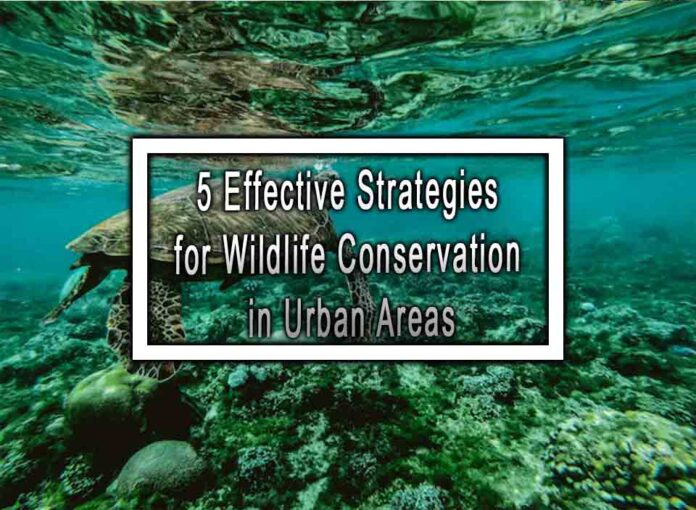Wildlife conservation in urban areas is essential to protect biodiversity and create a harmonious coexistence between humans and wildlife. Here are five effective strategies for wildlife conservation in urban settings:
1. Habitat Protection and Restoration:
Preserving and restoring natural habitats in urban areas is crucial for supporting wildlife populations. Identify and protect green spaces, parks, and undeveloped areas that serve as habitats for various species. Urban planning should consider wildlife corridors and connectivity between natural areas to allow wildlife movement.
2. Public Awareness and Education:
Educating the public about urban wildlife and the importance of conservation fosters a sense of responsibility and stewardship. Conduct awareness campaigns, workshops, and educational programs to raise awareness about wildlife species, their habitat needs, and how people can contribute to conservation efforts.
3. Wildlife-Friendly Infrastructure:
Design and implement infrastructure projects with wildlife in mind. Incorporate wildlife-friendly features, such as wildlife crossings over roads, green rooftops, and bird-friendly buildings. Reducing light pollution and noise can also benefit nocturnal wildlife and bird populations.
4. Community Engagement and Citizen Science:
Engaging local communities in wildlife conservation empowers them to take an active role in protecting their surroundings. Encourage citizen science initiatives where residents can participate in data collection, monitoring wildlife populations, and reporting wildlife sightings. Community involvement builds a sense of ownership and pride in conserving local wildlife.

5. Wildlife Rescue and Rehabilitation:
Establish partnerships with local wildlife rescue and rehabilitation centers to address wildlife emergencies in urban areas. These centers can rescue injured or orphaned wildlife and provide appropriate care for their rehabilitation before releasing them back into the wild.
By implementing these strategies, urban areas can become more wildlife-friendly environments, supporting biodiversity conservation and creating spaces where both people and wildlife can thrive together.










